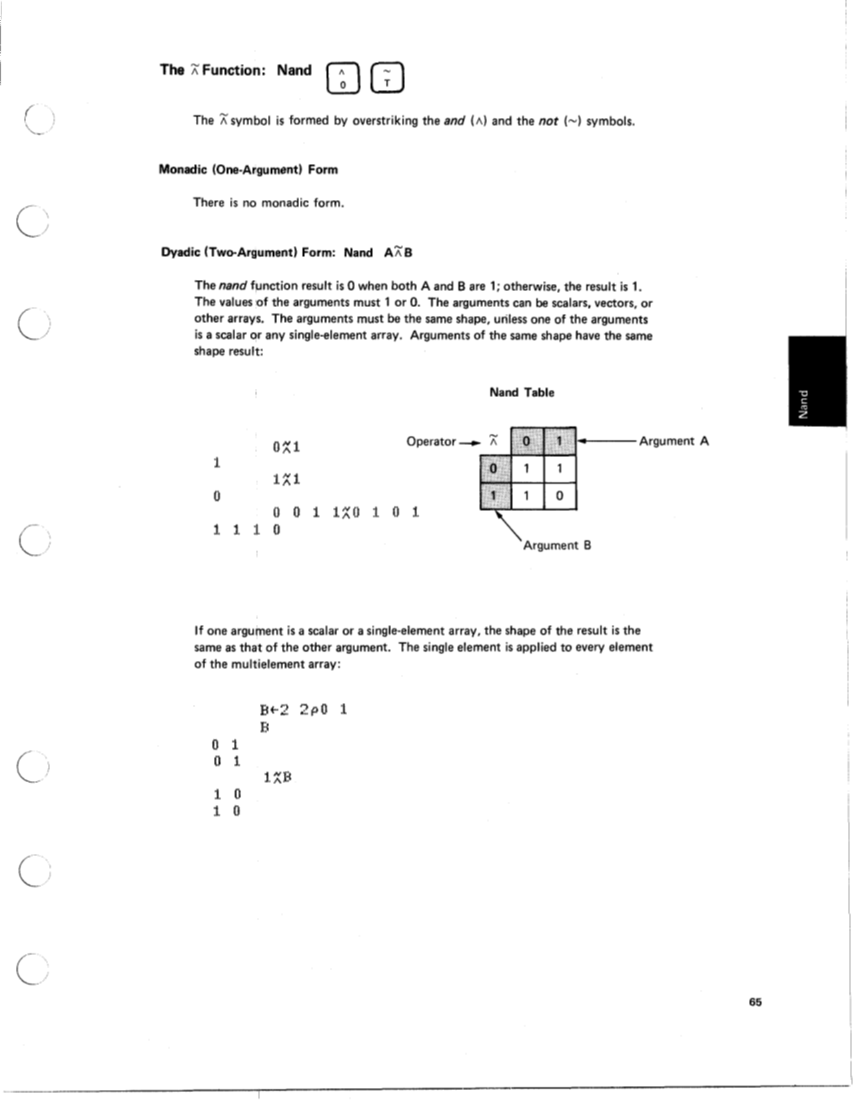64
I;]
The - Function: Not
Monadic (One-Argument) Form: Not - B
The not function result is 1 when B is 0 and 0 when B is 1. The values of the argu-
ment must be 1 or 0. The argument can be a scalar, vector, or other array. The shape
of the result is the same as that of the argument:
If the argument is an array, the function is extended to each element of the array:
Dyadic (Two-Argument) Form
There is no dyadic form.
I;]
The - Function: Not
Monadic (One-Argument) Form: Not - B
The not function result is 1 when B is 0 and 0 when B is 1. The values of the argu-
ment must be 1 or 0. The argument can be a scalar, vector, or other array. The shape
of the result is the same as that of the argument:
If the argument is an array, the function is extended to each element of the array:
Dyadic (Two-Argument) Form
There is no dyadic form.









































































































































































































































